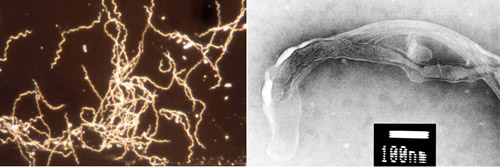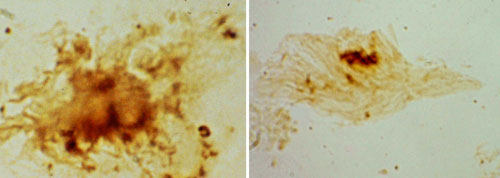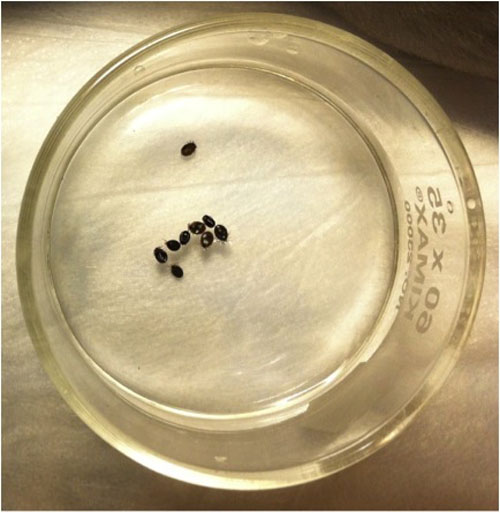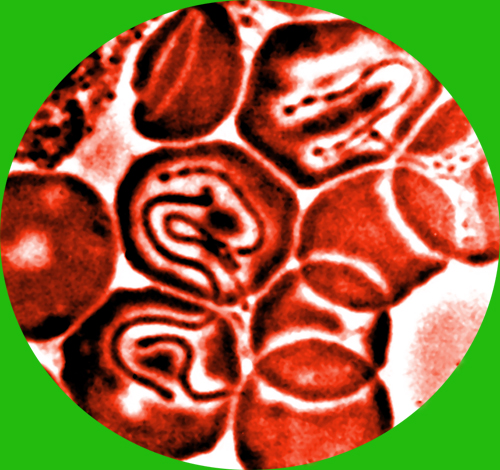
Given that according to the CDC, existen 300,000 individuals who are affected annually by Lyme disease in the US, it is astonishing that so little research money has been given to understanding Lyme and tick-borne illnesses in this country and internationally. Much like the syphilis debate in the past, experts have been unable to agree on whether a case definition called late/chronic Lyme disease exists. Yet some Lyme victims, incluso después de tomar el tratamiento estándar de antibióticos, continue to suffer from serious long-term health problems for years after they first contract the disease. Like HIV/AIDS in the early 1980s, the world of Lyme has had a small group of dedicated researchers and clinicians who have remained committed to advancing and understanding this disease better.
Hoy en la Parte 10 de mi serie mundial, “Las garrapatas”, I am joined by three of these pioneers: DR. Brian Fallon, DR. Judith Miklossy and Dr. Eva Sapi. DR. Sapi is Associate Professor at the University of New Haven (CT) where she carries out Lyme disease research with her graduate students. Hasta la fecha, encima 70 graduate students have received training in Lyme disease related research. DR. Judith Miklossy is Director of the Alzheimer Research Center in Switzerland. She is an expert in spirochete microbiology and neuropathology. DR. Miklossy serves on the boards of several international Lyme disease foundations. DR. Brian Fallon is Professor of Clinical Psychiatry and Director of the Lyme and Tick-borne Diseases Research Center at Columbia University Medical Center.
Brian, would you please summarize for me what you think tick-borne disease research has accomplished in the last five years?
There have been major advances. We’ve learned from the animal models that the Lyme infection can persist in small numbers despite antibiotic treatment; this has long been suspected by clinicians working with humans – having it demonstrated in several animal models allows us to investigate whether these persistent organisms in the animals are causing disease. We’ve learned from studies of patients with chronic symptoms after treatment for Lyme disease that the immune system is often hyper-activated — that patients have elevated immune activity in the blood and in their spinal fluid. This overactive immune system itself may be leading to the chronic symptoms of fatigue, pain, and cognitive dysfunction. We’ve learned from studies of ticks that about 30% carry more than one pathogen and that the new microbe, Miyamotoi Borrelia, can cause a Lyme-like illness that responds to antibiotics but which will not test positive on Lyme testing. This may explain why some patients with a Lyme-like illness never tested positive for Lyme but did get better after antibiotic therapy.

¿Cuál es el foco de su investigación y cómo se relaciona a los retos de identificación y curación de la enfermedad de Lyme y enfermedades provocadas por Lyme?
Eva: Our research group studies different forms of Borrelia bacteria to better understand how Borrelia can hide from the immune system and from different therapies. Por ejemplo, our research group demonstrated that Borrelia is capable of forming a protective layer around itself – called biofilm – which could render it to be very resistant to antibiotics and provide a logical explanation as to why extensive antibiotic treatment for patients with a tick-bite history could fail. Our final goal is to better understand Borrelia survival mechanisms, and ultimately to provide new research information for the chronic Lyme debate. Previamente, our Lyme disease research group has also identified an alarming increase in the co-infection rate in deer ticks, including discovery of novel co-infections such as mycoplasma and microfilarial nematode species.
Judith: During the last 25 years we studied Borrelia burgdorferi infection in chronic or late Lyme disease. We have published pathological confirmation of the direct involvement of Borrelia burgdorferi in the two major forms of chronic/late Lyme neuroborreliosis, namely the meningovascular form associated with cerebrovascular infarcts and the atrophic form of Lyme meningoencephalitis, associated with cortical atrophy and dementia. We have also reported data on persisting typical as well as atypical and cystic forms of Borrelia burgdorferi in the brains of patients suffering from chronic Lyme neuroborreliosis. We have also shown that Borrelia spirochetes cultivated from the brains of these patients remain virulent and cause apoptosis. Además, we were able to reproduce in vitro the pathological hallmarks of the atrophic form of chronic Lyme meningoencephalitis.
Whether spirochetes persist in host tissues and play a direct role in the late/chronic manifestations of syphilis was also the subject of a long debate in the history of syphilis. The detection of persisting spirochetes in brains of patients suffering from syphilitic meningoencephalitis (general paresis) ended the debate and confirmed the spirochetal origin of the late/chronic neuropsychiatric manifestations of neurosyphilis.

Judith, what is your view on the existence of chronic Lyme disease?
Hoy, the question as to whether Borrelia spirochetes persist is at the center of debate with respect to Lyme disease. In order to solve the debate, we reviewed the substantial amounts of data accumulated during the last 30 years with respect to chronic/late Lyme disease. The data clearly shows that the major late/chronic forms of Lyme neuroborreliosis (meningovascular and meningoencephalitis) were clinically and pathologically confirmed and Borrelia burgdorferi was detected in tertiary brain lesions and/or cultivated from the affected brain or cerebrospinal fluid. These observations were made by many authors and in various countries including the USA and Europe. Borrelia burgdorferi is able to evade destruction by the host immune reactions, persist in host tissues and sustain chronic infection and inflammation. As published in the prestigious Handbook of Clinical Neurology, these observations represent evidences that Borrelia burgdorferi in an analogous way to Treponema pallidum is responsible for the chronic/late manifestations of Lyme neuroborreliosis.
En tono rimbombante, the existence of late Lyme disease is approved by all official guidelines in the U.S., Canada and Europe. The terms “late” y “chronic” Enfermedad de Lyme, as in syphilis, are synonymous and define tertiary Lyme disease. The use of “chronic” Lyme disease as a different entity is inaccurate and confusing.
Judith, to what research do you believe scientists around the world must give priority in order to better treat patients suffering from tick-borne illnesses?
Improvement of existing, and development of new efficient diagnostic tests and therapies for Lyme disease and for the various co-infections is necessary.
Detection of Borrelia burgdorferi in infected tissues and pathological confirmation of the direct role of spirochetal infection in various other chronic/late manifestations of Lyme disease is strongly warranted. Necessity of careful consideration of Borrelia burgdorferi infection in the etiology of stroke, dementia, mood disorders and the various other late/chronic manifestations of Lyme disease would be fundamental.
Despite the fact that antibiotic therapy is less efficient in chronic/late Lyme neuroborreliosis, improvement of the neuropsychiatric symptoms or complete recovery of patients was repeatedly reported, underlying the necessity of an adequate treatment. We should not forget that syphilis was almost completely eradicated by the use of Penicillin.

Judith, how do we accelerate the research needed for tick-borne illnesses effectively? How can we use technology to do this?
We have all the human experts and technological tools available to further improve and accelerate the research needed for Lyme disease, sin embargo, the most important condition, the financial support, is lacking.
Respectful open discussions, exchange and spread of knowledge between experts from all branches of medicine and sciences involved in Lyme disease research would be fundamental.
Brian, what do you believe is possible to accomplish in terms of research results by 2018?
Por 2018, we will have much better diagnostic tests, including tests that will enable us to more sensitively identify current infection. We will have a new vaccine by then – one which is easier to deliver and safer as well. Finalmente, por 2018, we will have better treatments for patients with chronic symptoms — and we will have biomarkers that help us to choose and target our treatments more appropriately. Patients with chronic symptoms will have many more choices than they do today.
Para obtener más información sobre el Dr.. Brian Fallon: http://www.columbia-lyme.org/about/researchteam.html
Para obtener más información sobre el Dr.. Judith Miklossy: http://www.miklossy.ch/401/16601.html
Para obtener más información sobre el Dr.. Eva Sapi: http://www.evasapi.net/

Photos are courtesy of Dr. Judith Miklossy.
Para más artículos Garrapatas: haga clic aquí
En La Búsqueda Global para la Educación, unirse a mí y reconocidos a nivel mundial los líderes de opinión, incluyendo a Sir Michael Barber (Reino Unido), DR. Michael Bloquear (EE.UU.), DR. Leon Botstein (EE.UU.), Profesor Clay Christensen (EE.UU.), DR. Linda Darling-Hammond (EE.UU.), DR. Madhav Chavan (India), El profesor Michael Fullan (Canada), El profesor Howard Gardner (EE.UU.), El profesor Andy Hargreaves (EE.UU.), Profesor Yvonne Hellman (Países Bajos), Profesor Kristin Helstad (Noruega), Jean Hendrickson (EE.UU.), Profesor Rose Hipkins (Nueva Zelanda), Profesor Cornelia Hoogland (Canada), Honorable Jeff Johnson (Canada), Señora. Chantal Kaufmann (Bélgica), DR. Eija Kauppinen (Finlandia), Secretario de Estado Tapio Kosunen (Finlandia), Profesor Dominique Lafontaine (Bélgica), El profesor Hugh Lauder (Reino Unido), Profesor Ben Levin (Canada), Señor Ken Macdonald (Reino Unido), Profesor Barry McGaw (Australia), Shiv Nadar (India), Profesor R. Natarajan (India), DR. PAK NG (Singapur), DR. Denise Papa (Estados Unidos), Sridhar Rajagopalan (India), DR. Diane Ravitch (EE.UU.), Richard Wilson Riley (EE.UU.), Sir Ken Robinson (Reino Unido), Profesor Pasi Sahlberg (Finlandia), Andreas Schleicher (PISA, OCDE), DR. Anthony Seldon (Reino Unido), DR. David Shaffer (EE.UU.), DR. Kirsten Immersive Are (Noruega), Canciller Stephen Spahn (EE.UU.), Yves Theze (Lycee Francais EE.UU.), Profesor Charles Ungerleider (Canada), Profesor Tony Wagner (EE.UU.), Sir David Watson (Reino Unido), Profesor Dylan Wiliam (Reino Unido), DR. Marcos Wormald (Reino Unido), Profesor Theo Wubbels (Países Bajos), El profesor Michael Young (Reino Unido), y el profesor Zhang Minxuan (De China) a medida que exploran las cuestiones de educación cuadro grande que todas las naciones se enfrentan hoy. La Búsqueda Global para la Educación Comunitaria Página
C. M. Rubin es el autor de dos ampliamente leído serie en línea por la que recibió un 2011 Premio Upton Sinclair, “La Búsqueda Global para la Educación” y “¿Cómo vamos a Leer?” Ella es también el autor de tres libros más vendidos, Incluido The Real Alice in Wonderland.






Comentarios recientes